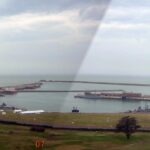Mar del Plata
Quick Info
Province of Buenos Aires
Lat 38º 02´S Long 057 º 31´W
Charts Arg H-250 H-251 B.A. 531/3065/4201
US 23145, 23142, 23030
Charts Arg H-250 H-251 B.A. 531/3065/4201
US 23145, 23142, 23030
Mar del Plata is the most important tourist resort in Argentina. It is in the province of Buenos Aires and has a population of about 580.000. Besides the tourism activity, it is an important commercial and financial center. Fishing is particularly important in this city and it also involves significant fish processing industrial activities. There are also important foodstuffs, clothing and metalworks industries. Located 400 km away from Buenos Aires, which is reached via a freeway, it is also well connected with the interior of the Pampa region through various highways. The city is served by the Ferrosur Roca railway and the Camet international airport has domestic services and international.

